When the Land Sings: Reconstructing Prehistoric Environments Using Evidence from Quaternary Geology and Geomorphology, with Examples Drawn from Fluvial Environments in the Nile and Son Valleys
Abstract
:1. Introduction
2. Overview
2.1. Geomorphological Evidence
2.2. Describing the Evidence
2.3. Evidence from Rivers
2.3.1. Late Quaternary Alluvial History and Prehistoric Environments in the Nile Basin
2.3.2. Alluvial History and Prehistoric Environments in the Middle Son Valley, North-Central India
2.4. Evidence from Lakes, Springs, and Wetlands
2.5. Evidence from Dunes and Desert Dust
2.6. Evidence from Volcanoes
2.7. Evidence from Coasts
3. Key Issues
Identifying Disturbance in Archaeological Sites
4. Summary and Future Directions
Funding
Institutional Review Board Statement
Informed Consent Statement
Data Availability Statement
Acknowledgments
Conflicts of Interest
Glossary
| Geoarchaeology is the use of earth science techniques in archaeology. |
| Geomorphology is the study of landforms and the processes responsible for their formation. |
| Soil is weathered rock and sediment in which plants grow. |
| The Quaternary Period is the most recent geological period, extending from 2.58 million years ago to present. It includes the Pleistocene Epoch (2.58 Ma to 11.7 ka) and the Holocene Epoch (11.7 ka to present). |
Appendix A
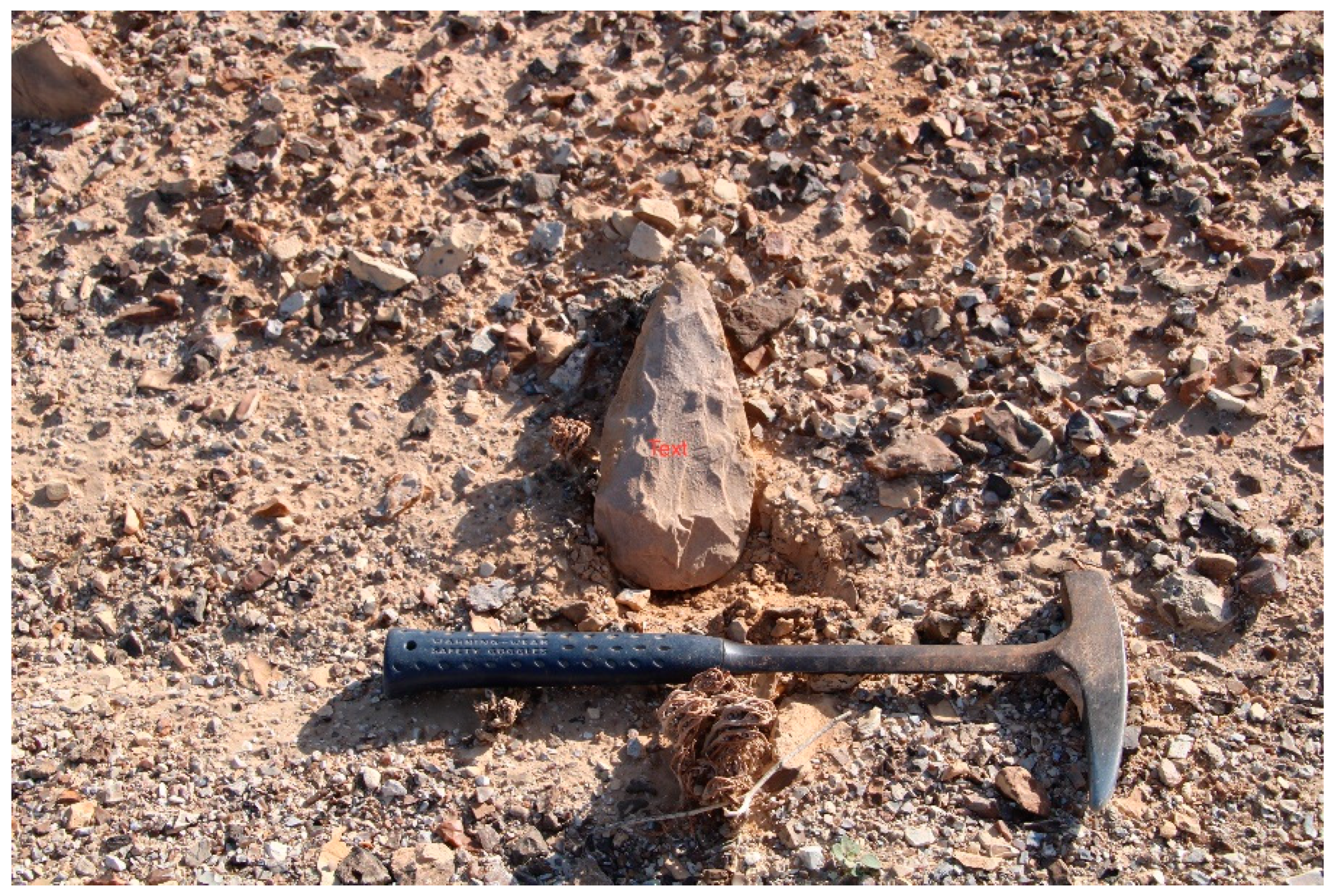
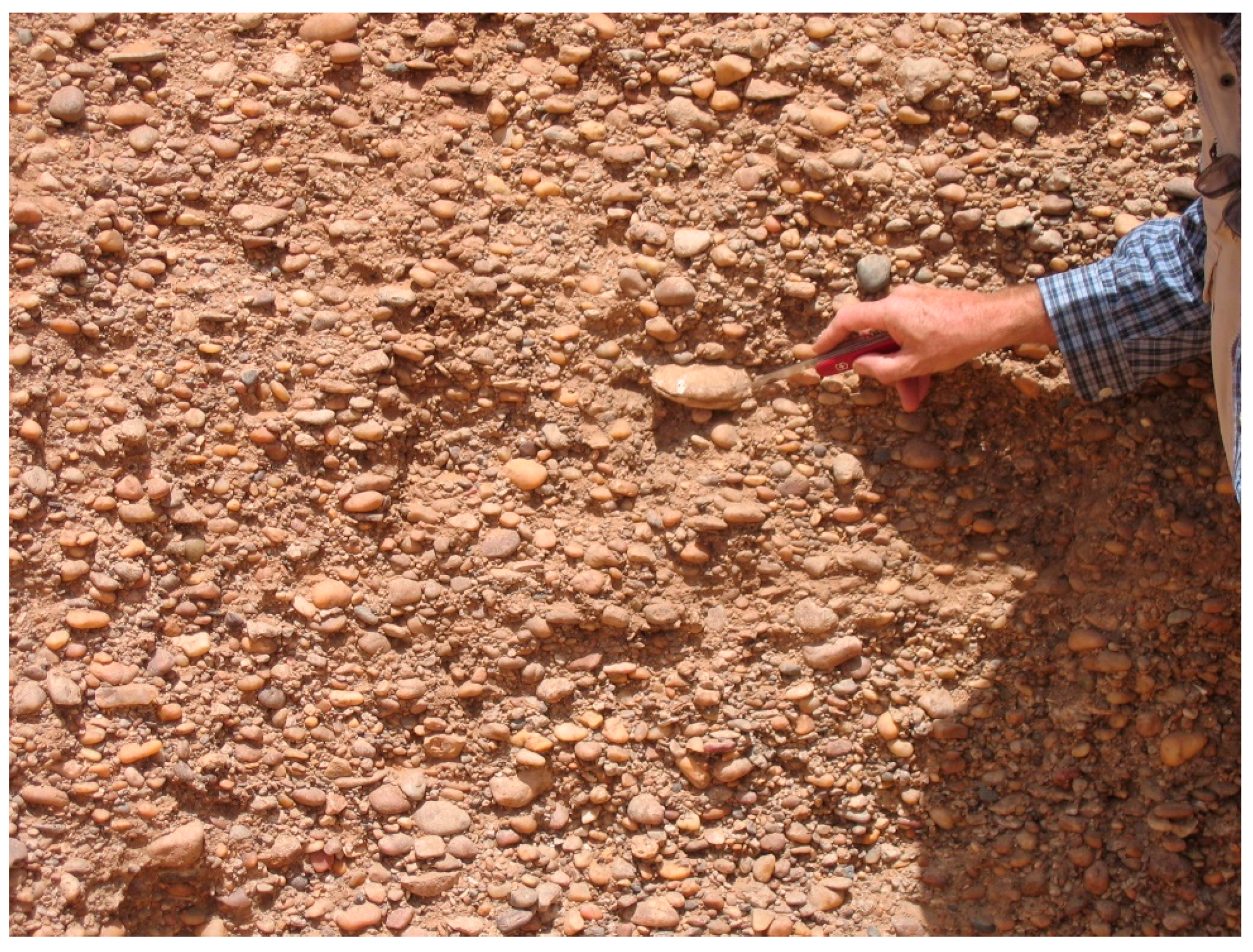
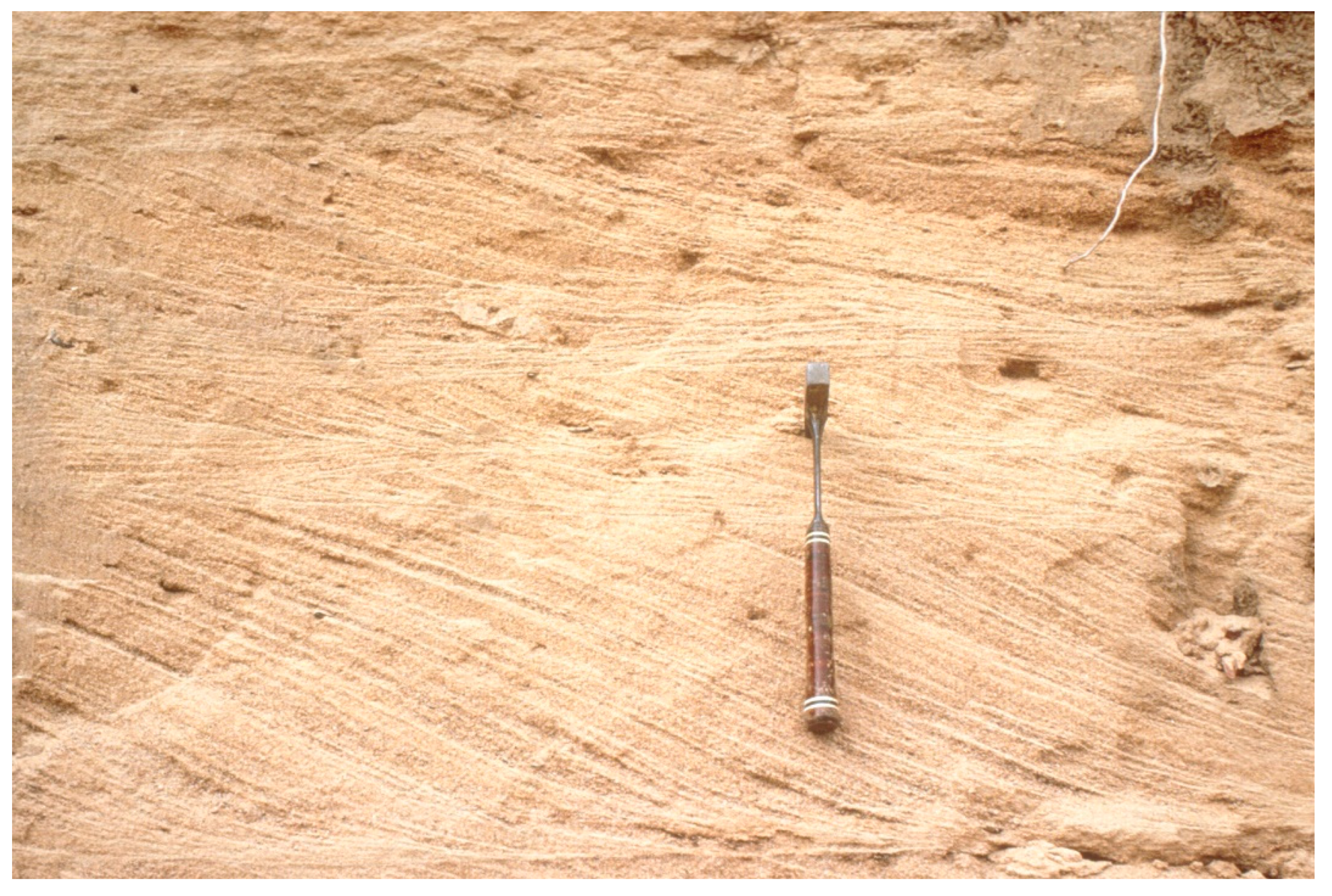
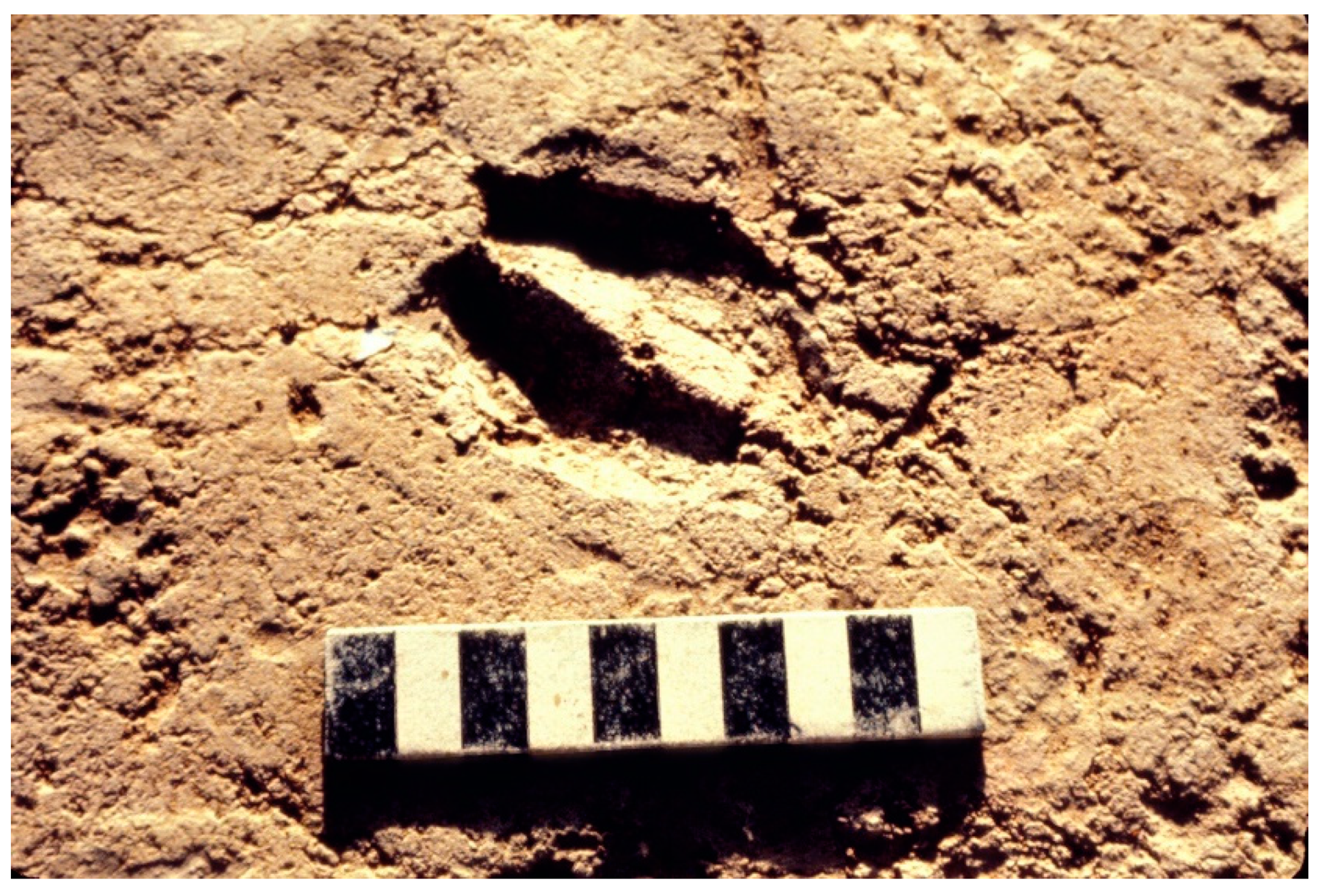
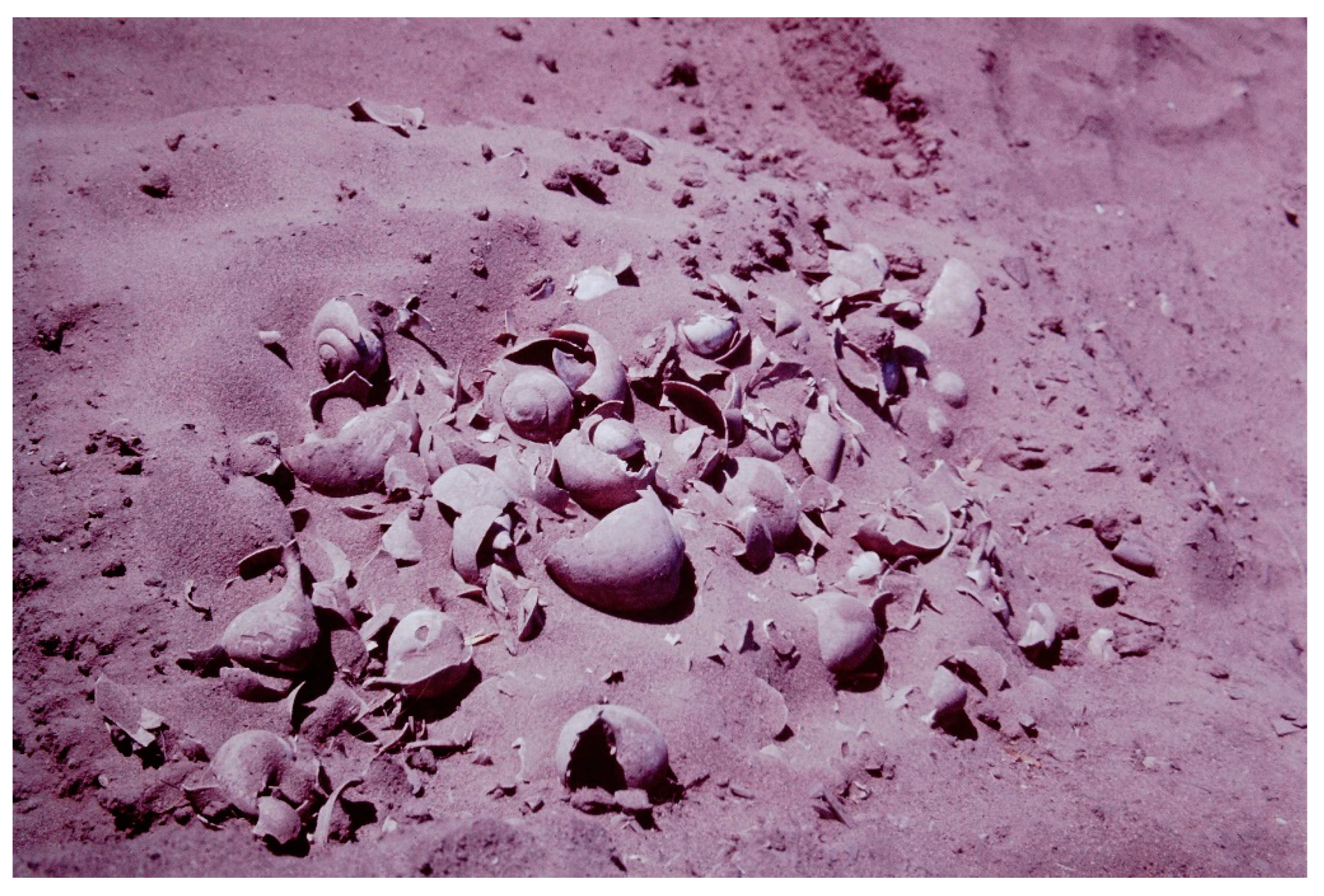

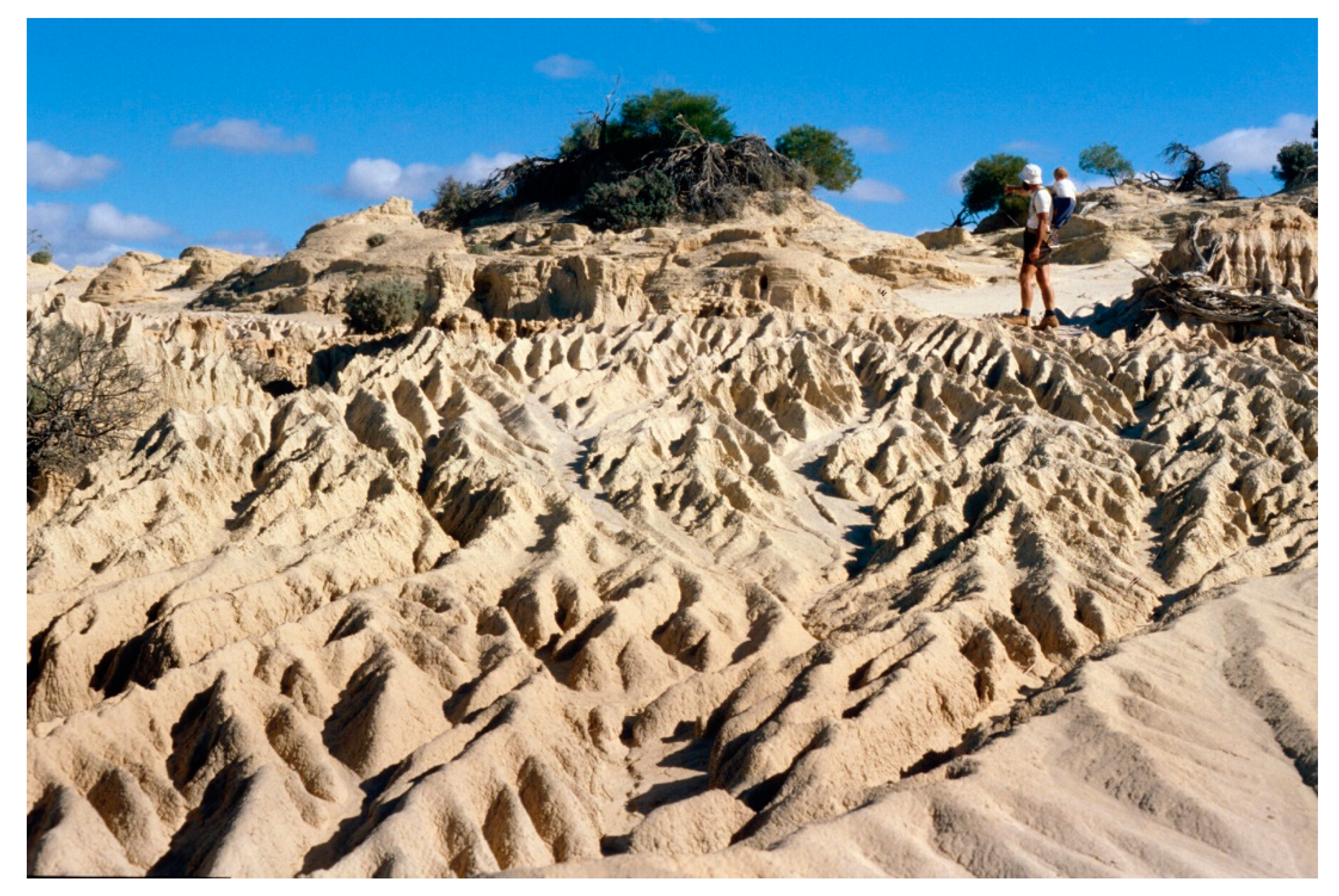

References
- Butzer, K.W.; Hansen, C.L. Desert and River in Nubia. Geomorphology and Prehistoric Environments at the Aswan Reservoir; University of Wisconsin Press: Madison, WI, USA, 1968. [Google Scholar]
- Butzer, K.W. Environment and Archaeology, 2nd ed.; Methuen: London, UK, 1971. [Google Scholar]
- Vita-Finzi, C. Archaeological Sites in Their Setting; Thames and Hudson: London, UK, 1978. [Google Scholar]
- O’Connell, J.F.; Allen, J.; Williams, M.A.J.; Williams, A.N.; Turney, C.S.M.; Spooner, N.A.; Kamminga, J.; Brown, G.; Cooper, A. When did Homo sapiens first reach Southeast Asia and Sahul? Proc. Natl. Acad. Sci. USA 2018, 115, 8482–8490. [Google Scholar] [CrossRef] [Green Version]
- Williams, M.A.J.; Spooner, N.A.; McDonnell, K.; O’Connell, J.F. Identifying disturbance in archaeological sites in tropical northern Australia: Implications for previously proposed 65,000-year continental occupation date. Geoarchaeology 2020, 36, 92–108. [Google Scholar] [CrossRef]
- Ghilardi, M. Geoarchaeology: Where Geosciences Meet the Humanities to Reconstruct Past Human–Environment Interactions. An Application to the Coastal Areas of the Largest Mediterranean Islands. Appl. Sci. 2021, 11, 4480. [Google Scholar] [CrossRef]
- Vita-Finzi, C. Recent Earth History; Macmillan: London, UK, 1973; 138p. [Google Scholar]
- Lowe, J.J.; Walker, M.J.C. Reconstructing Quaternary Environments, 3rd ed.; Routledge: London, UK, 2014; 568p. [Google Scholar]
- Williams, M.; Dunkerley, D.; De Deckker, P.; Kershaw, P.; Chappell, J. Quaternary Environments, 2nd ed.; Arnold: London, UK, 1998; 329p. [Google Scholar]
- Walker, M. Quaternary Dating Methods; Wiley: Chichester, UK, 2005; 286p. [Google Scholar]
- Williams, M. Climate Change in Deserts: Past, Present and Future; Cambridge University Press: Cambridge, UK; New York, NY, USA, 2014; 629p. [Google Scholar]
- Cooke, R.; Warren, A.; Goudie, A. Desert Geomorphology; UCL Press: London, UK, 1993; 526p. [Google Scholar]
- Goudie, A.S. Arid and Semi-Arid Geomorphology; Cambridge University Press: Cambridge, UK, 2013; 454p. [Google Scholar]
- Roche, H. Premiers Outils Taillés d’Afrique; Societe d’Ethnographie: Paris, France, 1980; 114p. [Google Scholar]
- Semaw, S.; Renne, P.; Harris, J.W.K.; Feibel, C.S.; Bernor, R.L.; Fesseka, N.; Mowbray, K. 2.5-Million-year-old stone tools from Gona, Ethiopia. Nature 1997, 385, 333–336. [Google Scholar] [CrossRef] [PubMed]
- Williams, M. The Nile Basin: Quaternary Geology, Geomorphology and Prehistoric Environments; Cambridge University Press: Cambridge, UK; New York, NY, USA, 2019; 405p. [Google Scholar]
- Williams, M. When the Sahara Was Green: How Our Greatest Desert Came to Be; Princeton University Press: Princeton, NJ, USA, 2021; 222p. [Google Scholar]
- Williams, M.A.J.; Abell, P.I.; Sparks, B.W. Quaternary landforms, sediments, depositional environments and gastropod isotope ratios at Adrar Bous, Tenere Desert of Niger, south-central Sahara. In Desert Sediments: Ancient and Modern; Frostick, L., Reid, I., Eds.; Geological Society Special Publication No. 35; Geological Society: London, UK, 1987; pp. 105–125. [Google Scholar]
- Breeze, P.S.; Groucutt, H.S.; Drake, N.H.; White, T.S.; Jennings, R.P.; Petraglia, M.D. Palaeohydrological corridors for hominin dispersals in the Middle East ~250–70,000 years ago. Quat. Sci. Rev. 2016, 144, 155–185. [Google Scholar] [CrossRef]
- Pachur, H.-J.; Kröpelin, S. Wadi Howar: Paleoclimatic evidence from an extinct river system in the southeastern Sahara. Science 1987, 237, 298–300. [Google Scholar] [CrossRef] [Green Version]
- Kröpelin, S. Zur Rekonstruktion der spätquartären Umwelt am Unteren Wadi Howar (Südöstliche Sahara/NW Sudan). Berl. Geogr. Abh. 1993, 54, 1–193. [Google Scholar]
- Larrasoaña, J.C.; Roberts, A.P.; Rohling, E.J.; Winklhofer, M.; Wehausen, R. Three million years of monsoon variability over the northern Sahara. Clim. Dyn. 2003, 21, 689–698. [Google Scholar] [CrossRef]
- Zerboni, A. Cambiamenti Climatici Olocenici nel Sahara Central: Nuovi Archive Paleoambientali. Unpublished Ph.D. Thesis, University of Milan, Milan, Italy, 2005; 233p. [Google Scholar]
- Drake, N.; Bristow, C. Shorelines in the Sahara: Geomorphological evidence for an enhanced monsoon from palaeolake Megachad. Holocene 2006, 16, 901–911. [Google Scholar] [CrossRef]
- Kuper, R.; Kröpelin, S. Climate-controlled Holocene occupation in the Sahara: Motor of Africa’s evolution. Science 2006, 313, 803–807. [Google Scholar] [CrossRef] [Green Version]
- Armitage, S.; Drake, N.; Stokes, S.; El-Hawat, A.; Salem, M.; White, K.; Turner, P.; McLaren, S. Multiple phases of North African humidity recorded in lacustrine sediments from the Fazzan Basin, Libyan Sahara. Quat. Geochronol. 2007, 2, 181–186. [Google Scholar] [CrossRef]
- Bubenzer, O.; Riemer, H. Holocene climatic change and human settlement between the central Sahara and the Nile Valley: Archaeological and geomorphological results. Geoarchaeology 2007, 22, 607–620. [Google Scholar] [CrossRef]
- Zerboni, A. Holocene rock varnish on the Messak plateau (Libyan Sahara): Chronology of weathering processes. Geomorphology 2008, 102, 640–651. [Google Scholar] [CrossRef]
- Castañeda, I.S.; Mulitza, S.; Schefuß, E.; dos Santos, R.A.L.; Damsté, J.S.S.; Schouten, S. Wet phases in the Sahara/Sahel region and human migration patterns in North Africa. Proc. Natl. Acad. Sci. USA 2009, 106, 20159–20163. [Google Scholar] [CrossRef] [PubMed] [Green Version]
- Drake, N.A.; Blench, R.M.; Armitage, S.J.; Bristow, C.S.; White, K.H. Ancient watercourses and biogeography of the Sahara explain the peopling of the desert. Proc. Natl. Acad. Sci. USA 2010, 108, 458–462. [Google Scholar] [CrossRef] [Green Version]
- United States Department of Agriculture. Soil Survey Manual, 3rd ed.; Agricultural Handbook No. 18; U.S. Government Printing Office: Washington, DC, USA, 1951; 503p.
- United States Department of Agriculture. Soil Survey Manual, 4th ed.; Agricultural Handbook No. 18; U.S. Government Printing Office: Washington, DC, USA, 2017; 639p.
- Prothero, D.R.; Schwab, F. Sedimentary Geology: An Introduction to Sedimentary Rocks and Stratigraphy; W.H. Freeman & Co.: New York, NY, USA, 2013; 593p. [Google Scholar]
- WoldeGabriel, G.; Haile-Selassie, Y.; Renne, P.R.; Hart, W.K.; Ambrose, S.H.; Asfaw, B.; Heiken, G.; White, T. Geology and palaeontology of the Late Miocene Middle Awash valley, Afar rift, Ethiopia. Nature 2001, 412, 175–178. [Google Scholar] [CrossRef]
- WoldeGabriel, G.; Ambrose, S.H.; Barboni, D.; Bonnefille, R.; Bremond, L.; Currie, B.; DeGusta, D.; Hart, W.K.; Murray, A.; Renne, P.; et al. The geological, isotopic, botanical, invertebrate and lower vertebrate surroundings of Ardipithecus ramidus. Science 2009, 326, 65–65e5. [Google Scholar] [CrossRef] [Green Version]
- Macklin, M.G.; Woodward, J.C.; Welsby, D.A.; Duller, G.A.T.; Williams, F.; Williams, M.A.J. Reach-scale river dynamics moderate the impact of rapid Holocene climate change on floodwater farming in the desert Nile. Geology 2013, 41, 695–698. [Google Scholar] [CrossRef]
- Wasson, R.J. Geomorphic histories for river and catchment management. Philos. Trans. R. Soc. Lond. Ser. A 2012, 370, 2240–2263. [Google Scholar] [CrossRef]
- Vita-Finzi, C. River history and tectonics. Philos. Trans. R. Soc. Lond. Ser. A 2012, 370, 2173–2192. [Google Scholar]
- Williams, M. River sediments. Philos. Trans. R. Soc. Lond. Ser. A 2012, 370, 2093–2122. [Google Scholar] [CrossRef] [PubMed]
- Williams, M. A tale of three rivers: Making sense of fragmentary alluvial records. In Tales of Three Worlds. Archaeology and Beyond: Asia, Italy, Africa: A Tribute to Sandro Salvatori; Usai, D., Tuzzato, S., Vidale, M., Eds.; Archaeopress Archaeology: Oxford UK, 2020; pp. 325–341. [Google Scholar]
- Adamson, D.A.; Gasse, F.; Street, F.A.; Williams, M.A.J. Late Quaternary history of the Nile. Nature 1980, 287, 50–55. [Google Scholar] [CrossRef]
- Williams, M.A.J. A river flowing through a desert: Late Quaternary environments in the Nile basin—Current understanding and unresolved questions. J. Palaeosci. 2021, 70, 267–288. [Google Scholar]
- Williams, M.A.J.; Street, F.A.; Dakin, F.M. Fossil periglacial deposits in the Semien Highlands, Ethiopia. Erdkunde 1978, 32, 40–46. [Google Scholar] [CrossRef]
- Hurni, H. Hochgebirge von Semien—Äthiopien. Klima und Dynamik der Höhenstufung von der Letzten Kaltzeit bis zur Gegenwart; Letzten Kaltzeit bis zur Gegenwart; Institute of Geography, University of Bern: Bern, Switzerland, 1982; 196p. [Google Scholar]
- Vermeersch, P.M.; Van Neer, W. Nile behaviour and Late Palaeolithic humans in Upper Egypt during the Late Pleistocene. Quat. Sci. Rev. 2015, 130, 155–167. [Google Scholar] [CrossRef] [Green Version]
- Williams, M.A.J.; Adamson, D.A. Late Pleistocene desiccation along the White Nile. Nature 1974, 248, 584–586. [Google Scholar] [CrossRef]
- Stager, J.C.; Reinthal, P.N.; Livingstone, D.A. A 25,000-year history for Lake Victoria, East Africa, and some comments on its significance for the evolution of cichlid fishes. Freshw. Biol. 1986, 16, 15–19. [Google Scholar] [CrossRef]
- Stager, J.; Mayewski, P.A.; Meeker, L. Cooling cycles, Heinrich event 1, and the desiccation of Lake Victoria. Palaeogeogr. Palaeoclimatol. Palaeoecol. 2002, 183, 169–178. [Google Scholar] [CrossRef]
- Stager, J.C.; Johnson, T.C. The late Pleistocene desiccation of Lake Victoria and the origin of its endemic biota. Hydrobiologia 2007, 596, 5–16. [Google Scholar] [CrossRef]
- Talbot, M.R.; Williams, M.A.J.; Adamson, D.A. Strontium isotopic evidence for Late Pleistocene re-establishment of an integrated Nile drainage network. Geology 2000, 28, 343–346. [Google Scholar] [CrossRef]
- Williams, M.; Talbot, M.; Aharon, P.; Salaam, Y.A.; Williams, F.; Brendeland, K.I. Abrupt return of the summer monsoon 15,000 years ago: New supporting evidence from the lower White Nile valley and Lake Albert. Quat. Sci. Rev. 2006, 25, 2651–2665. [Google Scholar] [CrossRef]
- Honegger, M.; Williams, M. Human occupations and environmental changes in the Nile valley during the Holocene: The case of Kerma in Upper Nubia (northern Sudan). Quat. Sci. Rev. 2015, 130, 141–154. [Google Scholar] [CrossRef]
- Williams, M.A.; Usai, D.; Salvatori, S.; Williams, F.M.; Zerboni, A.; Maritan, L.; Linseele, V. Late Quaternary environments and prehistoric occupation in the lower White Nile valley, central Sudan. Quat. Sci. Rev. 2015, 130, 72–88. [Google Scholar] [CrossRef]
- Williams, M. Geomorphology and Quaternary Geology of the Region between Wadi el Arab and Kerma; Université de Neuchâtel, Documents de la Mission Archéologique Suisse au Soudan 2012/4: Neuchâtel, Switzerland, 2012; pp. 10–15. [Google Scholar]
- Williams, M.; Royce, K. Quaternary geology of the middle son valley, North Central India: Implications for prehistoric archaeology. Palaeogeogr. Palaeoclimatol. Palaeoecol. 1982, 38, 139–162. [Google Scholar] [CrossRef]
- Williams, M.A.J.; Clarke, M.F. Late Quaternary environments in north-central India. Nature 1984, 308, 633–635. [Google Scholar] [CrossRef]
- Williams, M.A.J.; Clarke, M.F. Quaternary geology and prehistoric environments in the Son and Belan Valleys, north-central India. Geol. Soc. India Mem. 1995, 32, 282–308. [Google Scholar]
- Clark, J.D.; Williams, M.A.J. Palaeoenvironments and prehistory in north central India: A preliminary report. In Studies in the Archaeology of India and Pakistan; Jacobson, J., Ed.; Oxford and IBH Pub Co.: New Delhi, India; Oxford, UK, 1986; pp. 18–41. [Google Scholar]
- Clark, J.D.; Williams, M.A.J. Prehistoric ecology, resource strategies and culture change in the Son valley, northern Madhya Pradesh, central India. Man Environ. 1990, 15, 13–24. [Google Scholar]
- Williams, M.A.J. Reconstructing prehistoric environments in the Son and Belan valleys, north-central India: Retrospect and prospect. J. Palaeosci. 2021, 70, 305–316. [Google Scholar]
- Williams, M.A.J.; Pal, J.N.; Jaiswal, M.; Singhvi, A.K. River response to Quaternary climatic fluctuations: Evidence from the Son and Belan valleys, north central India. Quat. Sci. Rev. 2006, 25, 2619–2631. [Google Scholar] [CrossRef]
- Williams, M.A.J. Environmental Change. In Handbook of Geomorphology; Gregory, K., Walling, D., Goudie, A., Eds.; Sage: London, UK, 2011; Chapter 31; pp. 535–554. [Google Scholar]
- Wendorf, F.; Schild, R.; Close, A. (Eds.) Egypt during the Last Interglacial: The Middle Paleolithic of Bir Tarfawi and Bir Sahara East; Plenum: New York, NY, USA, 1993; 596p. [Google Scholar]
- Van Neer, W. Fish remains from the Last Interglacial at Bir Tarfawi (Eastern Sahara, Egypt). In Egypt during the Last Interglacial: The Middle Palaeolithic of Bir Tarfawi and Bir Sahara East; Wendorf, F., Schild, R., Close, A.E., Associate, Eds.; Plenum: New York, NY, USA, 1993; pp. 144–154. [Google Scholar]
- Hoelzmann, P.; Kruse, H.-J.; Rottinger, F. Precipitation estimates for the eastern Saharan palaeomonsoon based on a water balance model of the West Nubian Palaeolake Basin. Glob. Planet. Change 2000, 26, 105–120. [Google Scholar] [CrossRef]
- Hoelzmann, P.; Keding, B.; Berke, H.; Kröpelin, S.; Kruse, H.-J. Environmental change and archaeology: Lake evolution and human occupation in the Eastern Sahara during the Holocene. Palaeogeogr. Palaeoclimatol. Palaeoecol. 2001, 169, 193–217. [Google Scholar] [CrossRef]
- Street, F.A. The relative importance of climate and local hydrogeological factors in influencing lake-level fluctuations. Palaeoecol. Afr. 1980, 12, 137–158. [Google Scholar]
- Bowler, J.M.; Johnston, H.; Olley, J.M.; Prescott, J.R.; Roberts, R.G.; Shawcross, W.; Spooner, N.A. New ages for human occupation and climatic change at Lake Mungo, Australia. Nature 2003, 421, 837–840. [Google Scholar] [CrossRef]
- Faure, H.; Manguin, E.; Nydal, R. Formations lacustres du Quaternaire supérieur du Niger oriental: Diatomites et âges absolus. Bull. BRGM 1963, 3, 41–63. [Google Scholar]
- Faure, H. Évolution des grands lacs sahariens à l’Holocène. Quaternaria 1966, 8, 167–175. [Google Scholar]
- Faure, H. Lacs quaternaires du Sahara. Int. Ver. Theor. Angew. Limnol. 1969, 17, 131–146. [Google Scholar] [CrossRef]
- Petit-Maire, N. (Ed.) Le Shati. Lac Pléistocène du Fezzan (Libye); C.N.R.S.: Paris, France, 1982; 118p. [Google Scholar]
- Petit-Maire, N. (Ed.) Paléoenvironnements du Sahara. Lacs Holocènes à Taoudenni (Mali); C.N.R.S.: Paris, France, 1991; 237p. [Google Scholar]
- Petit-Maire, N.; Riser, J. (Eds.) Sahara ou Sahel? Quaternaire récent du basin de Taoudenni (Mali); C.N.R.S.: Paris, France, 1983; 473p. [Google Scholar]
- Smith, A.B. The Kiffian. In Adrar Bous: Archaeology of a Central Saharan Granitic Ring Complex in Niger; Gifford-Gonzalez, D., Ed.; Royal Museum for Central Africa: Tervuren, Belgium, 2008; pp. 179–199. [Google Scholar]
- Gifford-Gonzalez, D.; Parham, J. The fauna from Adrar Bous and surrounding areas. In Adrar Bous: Archaeology of a Central Saharan Granitic Ring Complex in Niger; Gifford-Gonzalez, D., Ed.; Royal Museum for Central Africa: Tervuren, Belgium, 2008; pp. 313–353. [Google Scholar]
- Clark, J.D.; Carter, P.L.; Gifford-Gonzalez, D.; Smith, A.B. The Adrar Bous cow and African cattle. In Adrar Bous: Archaeology of a Central Saharan Granitic Ring Complex in Niger; Gifford-Gonzalez, D., Ed.; Royal Museum for Central Africa: Tervuren, Belgium, 2008; pp. 355–368. [Google Scholar]
- Smith, A.B. The Tenerian. In Adrar Bous: Archaeology of a Central Saharan Granitic Ring Complex in Niger; Gifford-Gonzalez, D., Ed.; Royal Museum for Central Africa: Tervuren, Belgium, 2008; pp. 201–243. [Google Scholar]
- Sereno, P.C.; Garcea, E.A.; Jousse, H.; Stojanowski, C.M.; Saliège, J.F.; Maga, A.; Ide, O.A.; Knudson, K.J.; Mercuri, A.M.; Stafford, T.W., Jr. Lakeside cemeteries in the Sahara: 5000 years of Holocene population and environmental change. PLoS ONE 2008, 3, e2995. [Google Scholar] [CrossRef]
- Brass, M. Early North African Cattle Domestication and Its Ecological Setting: A Reassessment. J. World Prehistory 2017, 31, 81–115. [Google Scholar] [CrossRef] [Green Version]
- Leakey, L.S.B. Homo habilis, Homo erectus and the australopithecines. Nature 1966, 209, 1279–1281. [Google Scholar] [CrossRef]
- Hay, R.L. Geology of the Olduvai Gorge. A Study of Sedimentation in a Semi-arid Basin; University of California Press: Berkeley, CA, USA, 1976; 203p. [Google Scholar]
- Clark, J.D. Shabona: An Early Khartoum settlement on the White Nile. In Late Prehistory of the Nile Basin and the Sahara; Krzyzaniak, L., Kobusiewicz, M., Eds.; Poznan Archaeological Museum: Poznan, Poland, 1989; pp. 387–410. [Google Scholar]
- Singhvi, A.K.; Williams, M.A.J.; Rajaguru, S.N.; Misra, V.N.; Chawla, S.; Stokes, S.; Chauhan, N.; Francis, T.; Ganjoo, R.K.; Humphreys, G.S. A ~200 ka record of climatic change and dune activity in the Thar Desert, India. Quat. Sci. Rev. 2010, 29, 3095–3105. [Google Scholar] [CrossRef]
- Liu, T. (Ed.) Loess and the Environment; China Ocean Press: Beijing, China, 1985; 251p. [Google Scholar]
- Liu, T. (Ed.) Quaternary Geology and Environment of China; China Ocean Press: Beijing, China, 1985. [Google Scholar]
- Liu, T. (Ed.) Aspects of Loess Research; China Ocean Press: Beijing, China, 1987. [Google Scholar]
- Liu, T. (Ed.) Loess, Environment and Global Change; Science Press: Beijing, China, 1991; 288p. [Google Scholar]
- Liu, T.; Ding, Z.I. Chinese loess and the paleomonsoon. Annu. Rev. Earth Planet. Sci. 1998, 26, 111–145. [Google Scholar] [CrossRef]
- Chi, Z.; Hung, H.-C. The Neolithic of Southern China—Origin, Development, and Dispersal. Asian Perspect. 2009, 47, 299–329. [Google Scholar] [CrossRef] [Green Version]
- Bowler, J. Clay Dunes: Their occurrence, formation and environmental significance. Earth-Sci. Rev. 1973, 9, 315–338. [Google Scholar] [CrossRef]
- Bowler, J. Aridity in Australia: Age, origins and expression in aeolian landforms and sediments. Earth-Sci. Rev. 1976, 12, 279–310. [Google Scholar] [CrossRef]
- Van der Kaars, S.; Williams, M.A.; Bassinot, F.; Guichard, F.; Moreno, E.; Dewilde, F.; Cook, E.J. The influence of the ~73 ka Toba super-eruption on the ecosystems of northern Sumatra as recorded in marine core BAR94-25. Quat. Int. 2012, 258, 45–53. [Google Scholar] [CrossRef]
- Leakey, M.D.; Hay, R.L. Pliocene footprints in the Laetolil Beds at Laetoli, northern Tanzania. Nature 1979, 278, 317–323. [Google Scholar] [CrossRef]
- Shane, P.; Westgate, J.; Williams, M.; Korisettar, R.; Shane, P. New Geochemical Evidence for the Youngest Toba Tuff in India. Quat. Res. 1995, 44, 200–204. [Google Scholar] [CrossRef]
- Westgate, J.A.; Shane, P.A.R.; Pearce, N.J.G.; Perkins, W.T.; Korisettar, R.; Chesner, C.A.; Williams, M.A.J.; Acharyya, S.K. All Toba tephra occurrences across peninsula India belong to 75 ka eruption. Quat. Res. 1998, 50, 107–112. [Google Scholar] [CrossRef]
- Williams, M.A.; Ambrose, S.H.; van der Kaars, S.; Ruehlemann, C.; Chattopadhyaya, U.; Pal, J.; Chauhan, P.R. Environmental impact of the 73ka Toba super-eruption in South Asia. Palaeogeogr. Palaeoclimatol. Palaeoecol. 2009, 284, 295–314. [Google Scholar] [CrossRef]
- Petraglia, M.; Korisettar, R.; Boivin, N.; Clarkson, C.; Ditchfield, P.; Jones, S.; Koshy, J.; Lahr, M.M.; Oppenheimer, C.; Pyle, D.; et al. Middle Pleistocene assemblages from the Indian subcontinent before and after the Toba super-eruption. Science 2007, 317, 114–116. [Google Scholar] [CrossRef] [Green Version]
- Williams, M.A.J.; Ambrose, S.H.; van der Kaars, S.; Ruehlemann, C.; Chattopadhyaya, U.; Pal, J.; Chauhan, P. Reply to the comment on ‘Environmental impact of the 73 ka Toba super-eruption in South Asia’. Palaeogeogr. Palaeoclimatol. Palaeoecol. 2010, 284, 295–314. [Google Scholar] [CrossRef]
- Williams, M. Did the Toba super-eruption have an enduring effect? Insights from genetics, prehistoric archaeology, pollen analysis, stable isotope geochemistry, geomorphology, ice cores, and climate models. Quat. Int. 2012, 269, 87–93. [Google Scholar]
- Williams, M. The Toba super-eruption: History of a debate. Quat. Int. 2012, 258, 19–29. [Google Scholar] [CrossRef]
- Oppenheimer, S. Eden in the East: The Drowned Continent of Southeast Asia; Weidenfeld and Nicholson: London, UK, 1998; 560p. [Google Scholar]
- Li, L.; Zhu, C.; Qin, Z.; Storozum, M.J.; Kidder, T.R. Relative sea level rise, site distributions, and Neolithic settlement in the early to middle Holocene, Jiangsu Province, China. Holocene 2017, 28, 354–362. [Google Scholar] [CrossRef]
- Clarke, M.F.; Wasson, R.J.; Williams, M.A.J. Point Stuart Chenier and Holocene sea levels in Northern Australia. Search 1979, 10, 90–92. [Google Scholar]
- Williams, M.A.J. Evolution of the landscape. In Monsoonal Australia. Landscape, Ecology and Man in the Northern Lowlands; Ridpath, M.G., Haynes, C.D., Williams, M.A.J., Eds.; Balkema: Rotterdam, The Netherlands, 1991; pp. 5–17. [Google Scholar]
- Stanley, D.J.; Warne, A.G. Sea level and initiation of Predynastic culture in the Nile Delta. Nature 1993, 363, 435–438. [Google Scholar] [CrossRef]
- Binford, L.R. Bones: Ancient Men and Modern Myths; Academic Press: New York, NY, USA, 1981; 320p. [Google Scholar]
- Brain, C.K. The Hunters or the Hunted? An Introduction to African Cave Taphonomy; University of Chicago Press: Chicago, IL, USA, 1981; 361p. [Google Scholar]
- Behrensmeyer, A.K.; Kidwell, S.M. Taphonomy’s contribution to paleobiology. Paleobiology 1985, 11, 105–109. [Google Scholar]
- Behrensmeyer, A.K.; Gordon, K.D.; Yanagi, G.T. Trampling as a cause of bone surface damage and pseudo-cutmarks. Nature 1986, 319, 768–771. [Google Scholar] [CrossRef]
- Balek, C. Buried artefacts in stable upland sites and the role of bioturbation: A review. Geoarchaeology 2002, 17, 41–51. [Google Scholar] [CrossRef]
- Rink, W.J.; Dunbar, J.S.; Tschinkel, W.R.; Kwapich, C.; Repp, A.; Stanton, W.; Thulman, D.K. Subterranean transport and deposition of quartz by ants in sandy sites relevant to age overestimation in optical luminescence dating. J. Archaeol. Sci. 2013, 40, 2217–2226. [Google Scholar] [CrossRef] [Green Version]
- Nye, P.H. Some soil-forming processes in the humid tropics. IV. The action of the soil fauna. J. Soil Sci. 1955, 6, 73–83. [Google Scholar]
- Williams, M.A.J. Termites and soil development near Brocks Creek, Northern Territory. Aust. J. Sci. 1968, 31, 153–154. [Google Scholar]
- Williams, M.A.J. Termites, soils and landscape equilibrium in the Northern Territory of Australia. In Landform Evolution in Australasia; Davies, J.L., Williams, M.A.J., Eds.; Australian National University Press: Canberra, Australia, 1978; pp. 128–141. [Google Scholar]
- Williams, M.A.J. Termites and stone lines—Traps for the unwary archaeologist. Quat. Sci. Rev. 2019, 226, 106028. [Google Scholar] [CrossRef]
- McBrearty, S. Consider the humble termite: Termites as agents of post-depositional disturbance at african archaeological sites. J. Archaeol. Sci. 1990, 17, 111–143. [Google Scholar] [CrossRef]
- Cahen, D.; Moeyersons, J. Subsurface movements of stone artefacts and their implications for the prehistory of Central Africa. Nature 1977, 266, 812–815. [Google Scholar] [CrossRef]
- Bateman, M.D.; Frederick, C.D.; Jaiswal, M.K.; Singhvi, A.K. Investigations into the potential effects of pedoturbation on luminescence dating. Quat. Sci. Rev. 2003, 22, 1169–1176. [Google Scholar] [CrossRef] [Green Version]
- Bateman, M.D.; Boulter, C.H.; Carr, A.S.; Frederick, C.D.; Peter, D.; Wilder, M. Detecting post-depositional sediment disturbance in sandy deposits using optical luminescence. Quat. Geochronol. 2007, 2, 57–64. [Google Scholar] [CrossRef]
- Bateman, M.; Boulter, C.; Carr, A.; Frederick, C.; Peter, D.; Wilder, M. Preserving the palaeoenvironmental record in Drylands: Bioturbation and its significance for luminescence-derived chronologies. Sediment. Geol. 2007, 195, 5–19. [Google Scholar] [CrossRef] [Green Version]
- Mohr, E.C.J.; van Baren, F.A. Tropical Soils: A Critical Study of Soil Genesis as Related to Climate, Rock and Vegetation; Interscience Publishers: London, UK, 1959; 498p. [Google Scholar]
- Mohr, E.C.J.; van Baren, F.A.; van Schuylenborgh, J. Tropical Soils: A Comprehensive Study of Their Genesis; Mouton: The Hague, The Netherlands, 1972; 481p. [Google Scholar]
- Paton, T.R.; Humphreys, G.S.; Mitchell, P.B. Soils: A New Global View; University College Press: London, UK, 1995. [Google Scholar]
- McKenzie, N.; Jacquier, D.; Isbell, R.; Brown, K. Australian Soils and Landscapes. An Illustrated Compendium; CSIRO Publishing: Melbourne, Australia, 2004; 416p. [Google Scholar]
- Moeyersons, J. The behaviour of stones and stone implements, buried in consolidating and creeping Kalahari sands. Earth Surf. Process. Landf. 1978, 3, 115–128. [Google Scholar] [CrossRef]
- Wood, W.R.; Johnson, D.L. A survey of disturbance processes in archaeological site formation. Adv. Archaeol. Method Theory 1978, 1, 315–381. [Google Scholar]
- McCauley, J.F.; Schaber, G.G.; Breed, C.S.; Grolier, M.J.; Haynes, C.V.; Issawi, B.; Elachi, C.; Blom, R. Subsurface valleys and geoarchaeology of the eastern Sahara revealed by Shuttle Radar. Science 1982, 218, 1004–1020. [Google Scholar] [CrossRef] [PubMed]
- McHugh, W.P.; Breed, C.S.; Schaber, G.G.; McCauley, J.F.; Szabo, B.J. Acheulian sites along the ‘radar rivers’, southern Egyptian Sahara. J. Field Archaeol. 1988, 15, 361–379. [Google Scholar]
- McHugh, W.P.; Schaber, G.G.; Breed, C.S.; McCauley, J.F. Neolithic adaptation and the Holocene functioning of Tertiary palaeodrainages in southern Egypt and northern Sudan. Antiquity 1989, 63, 320–336. [Google Scholar] [CrossRef]
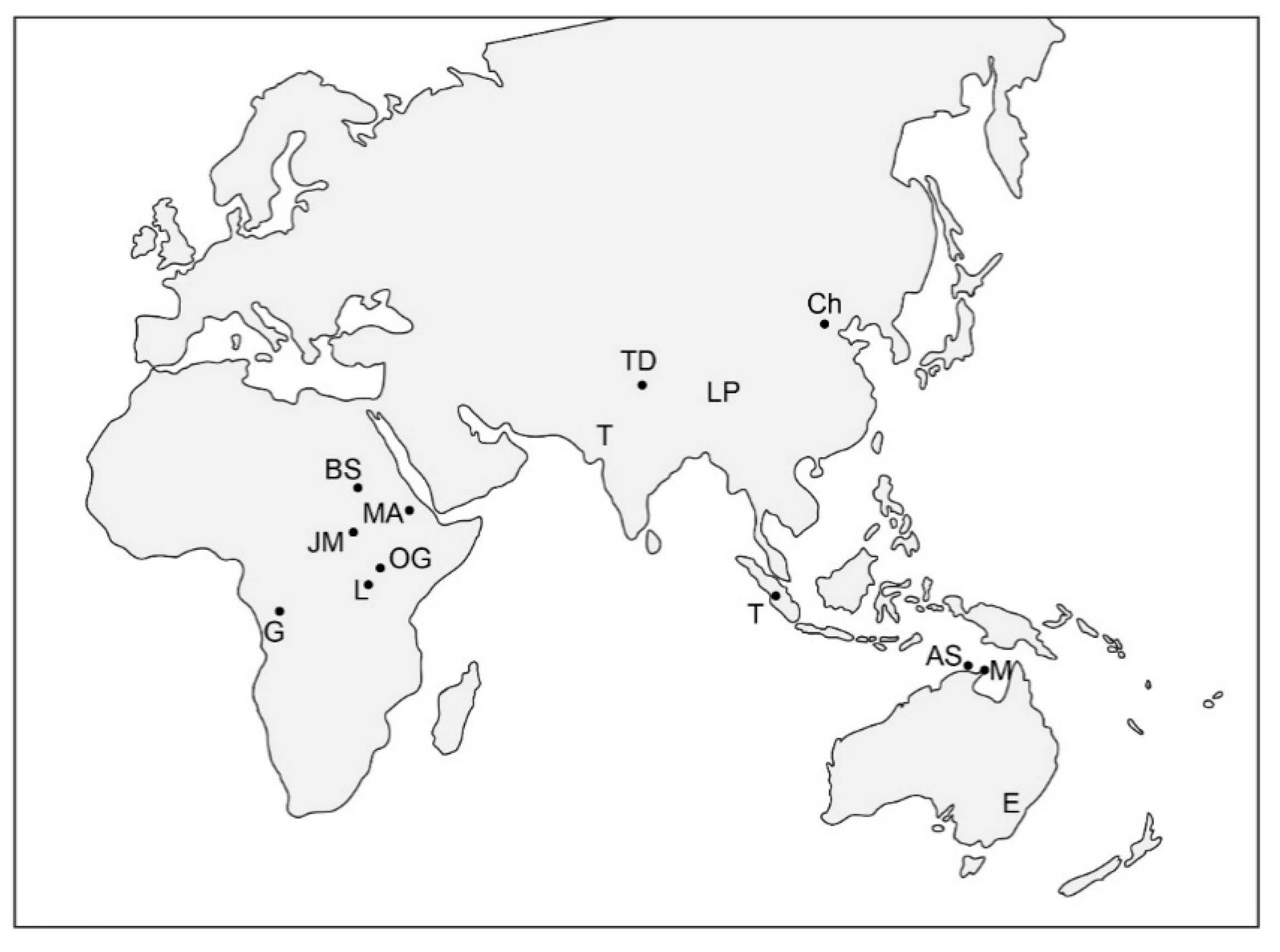


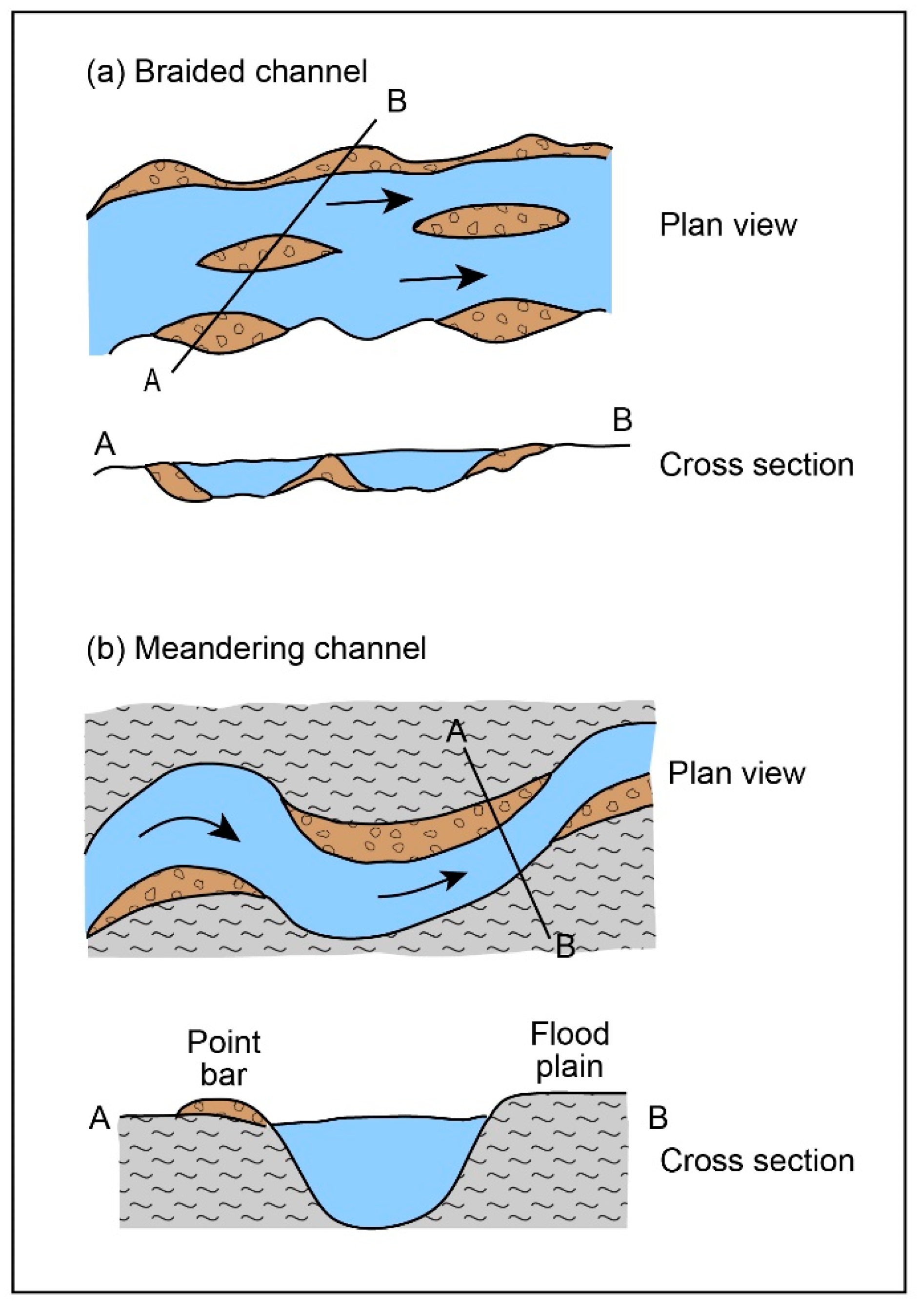
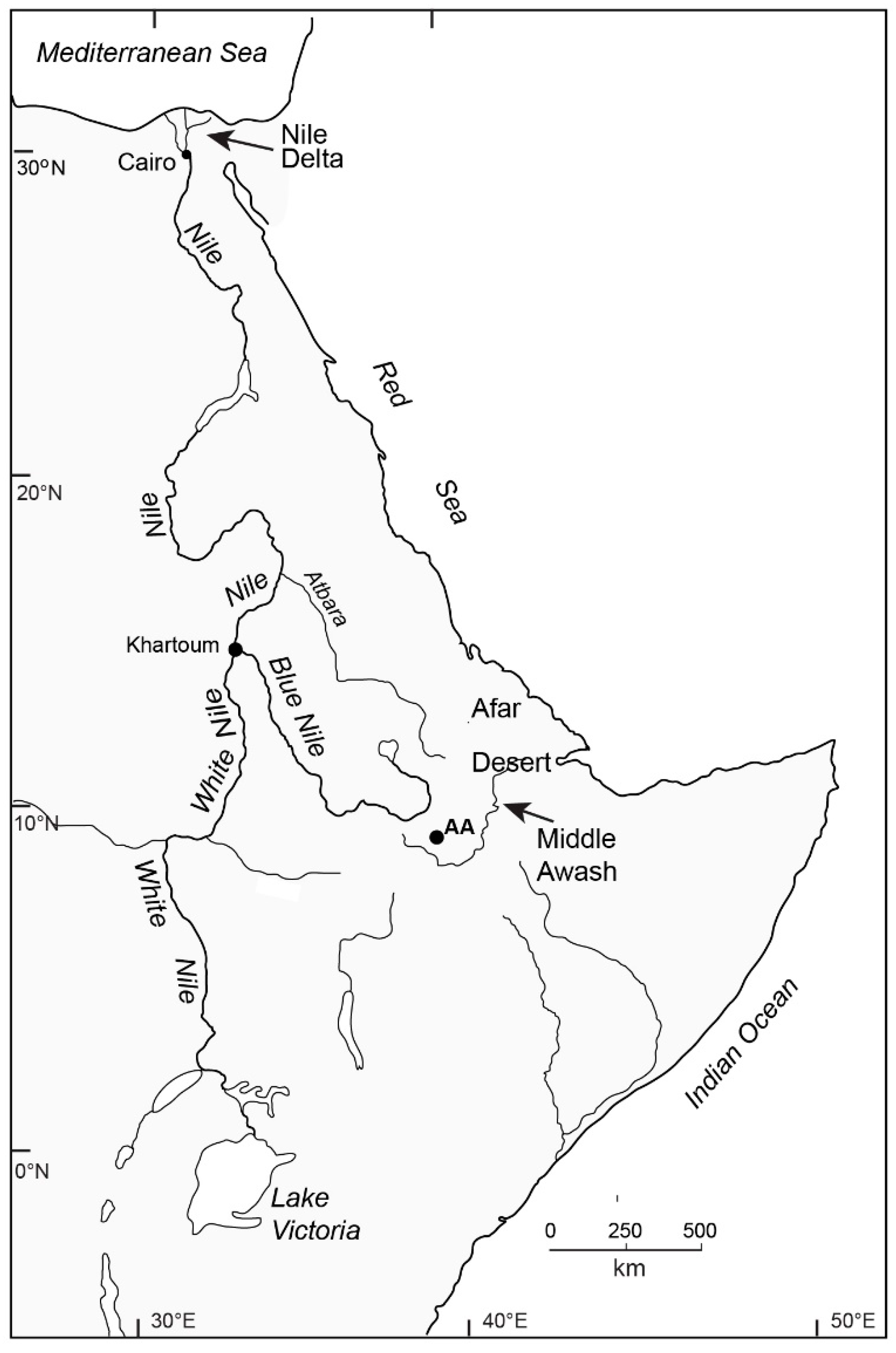

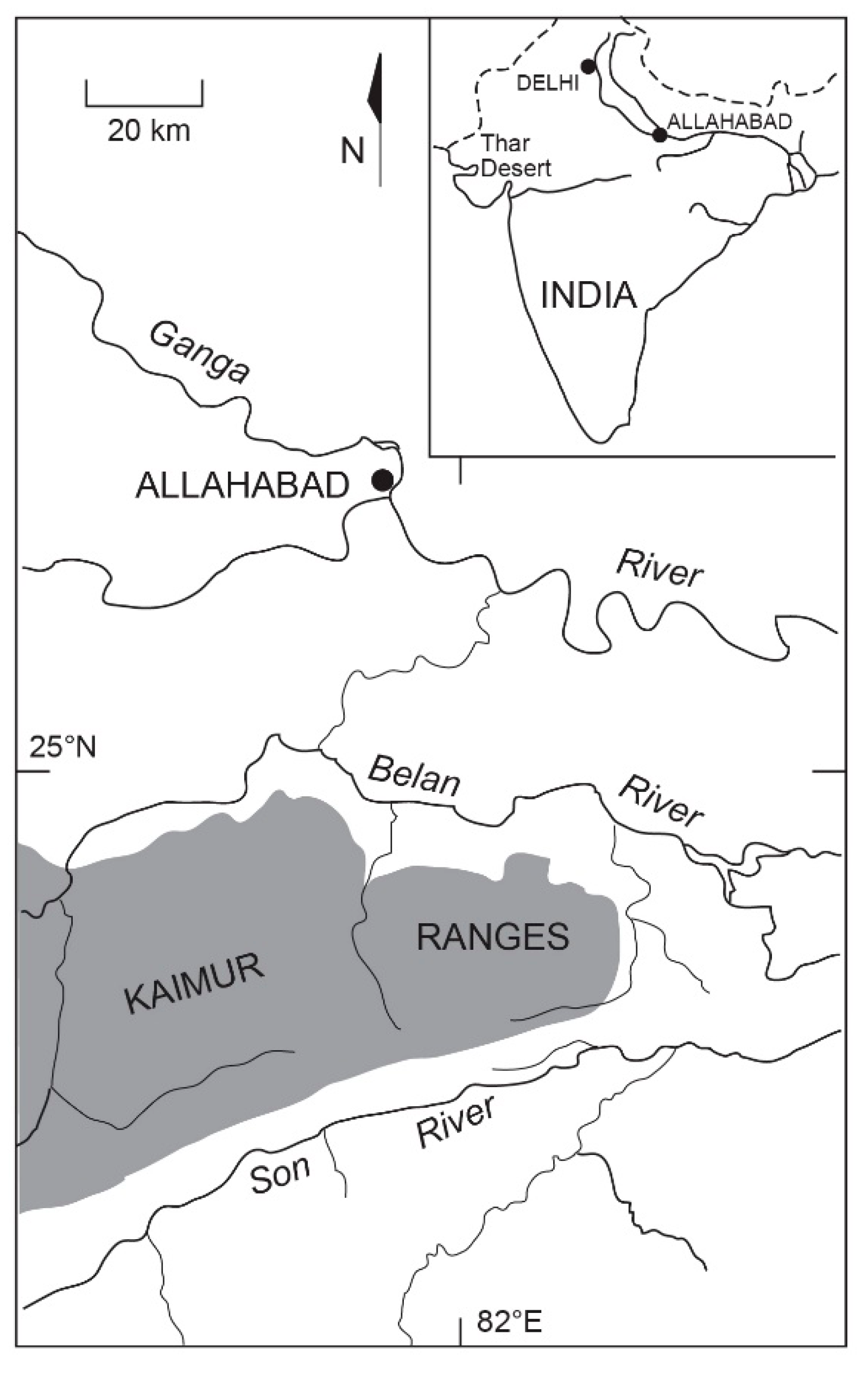
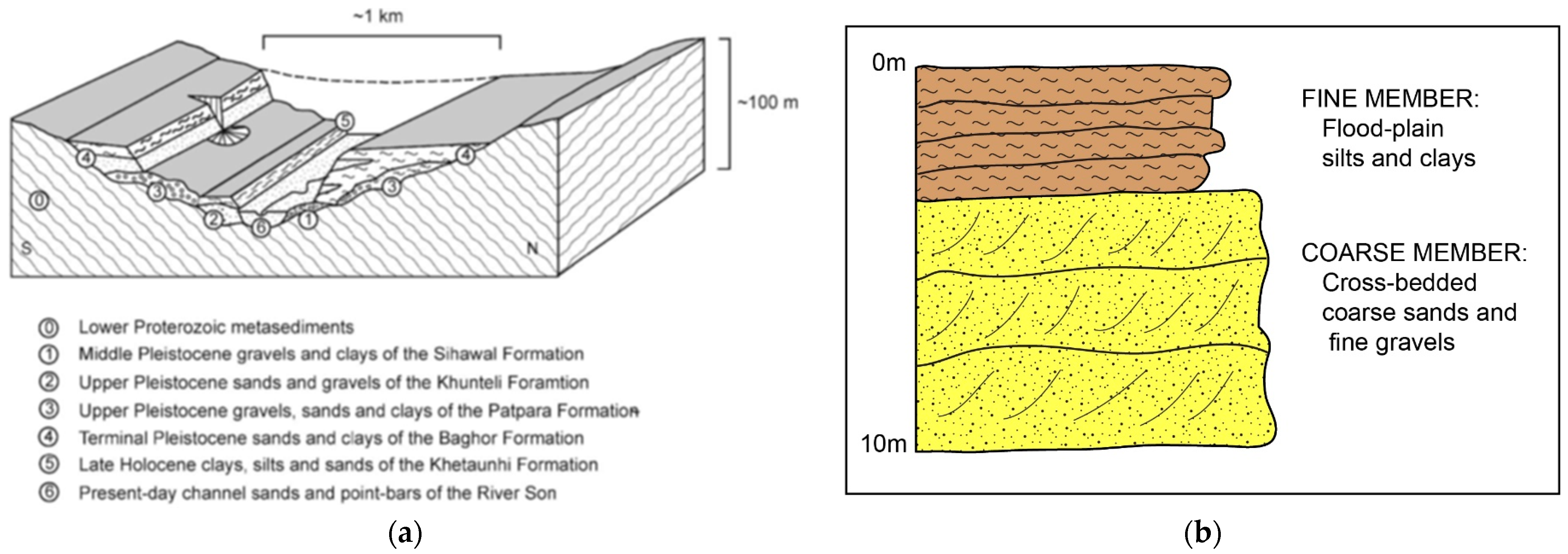
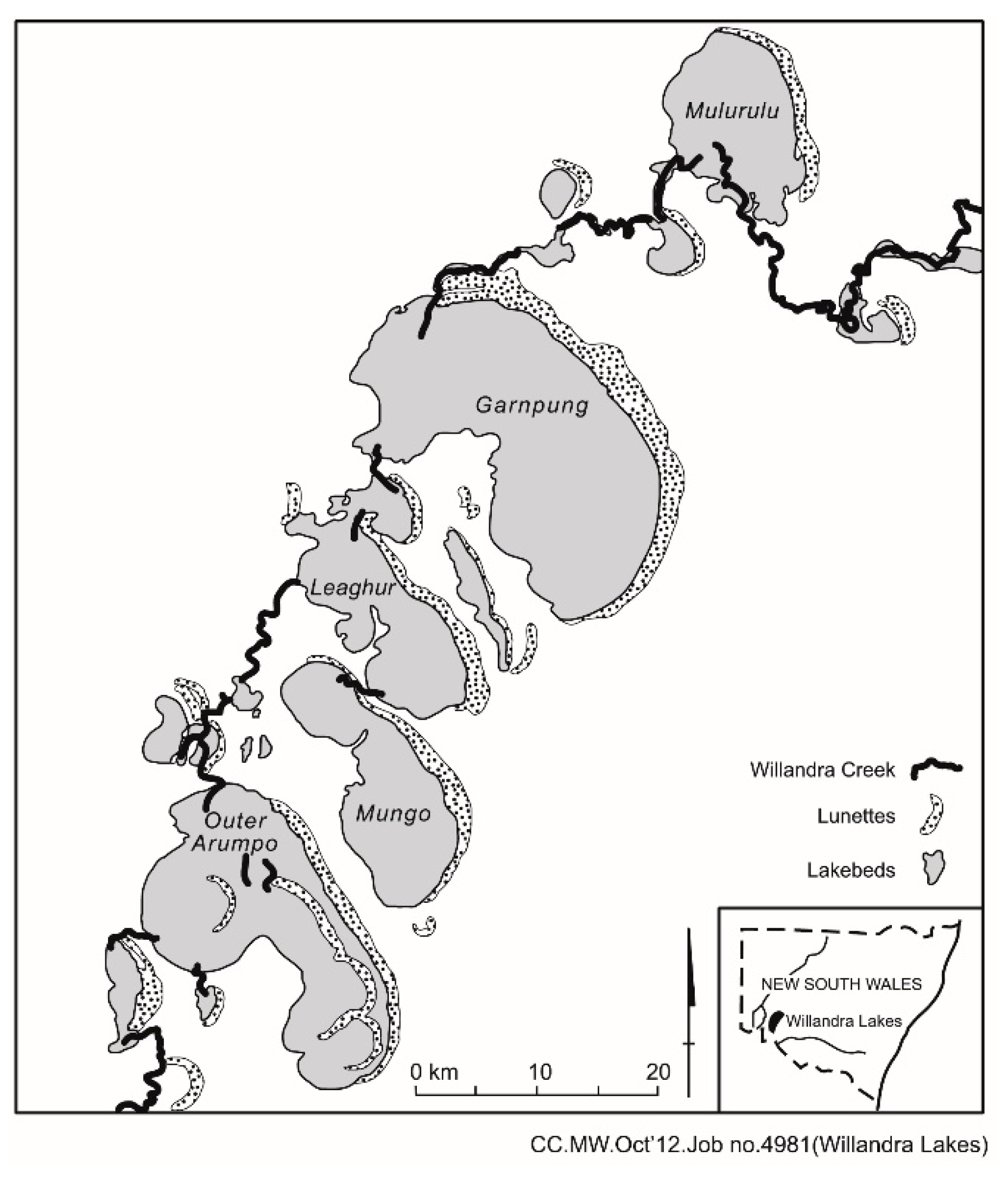

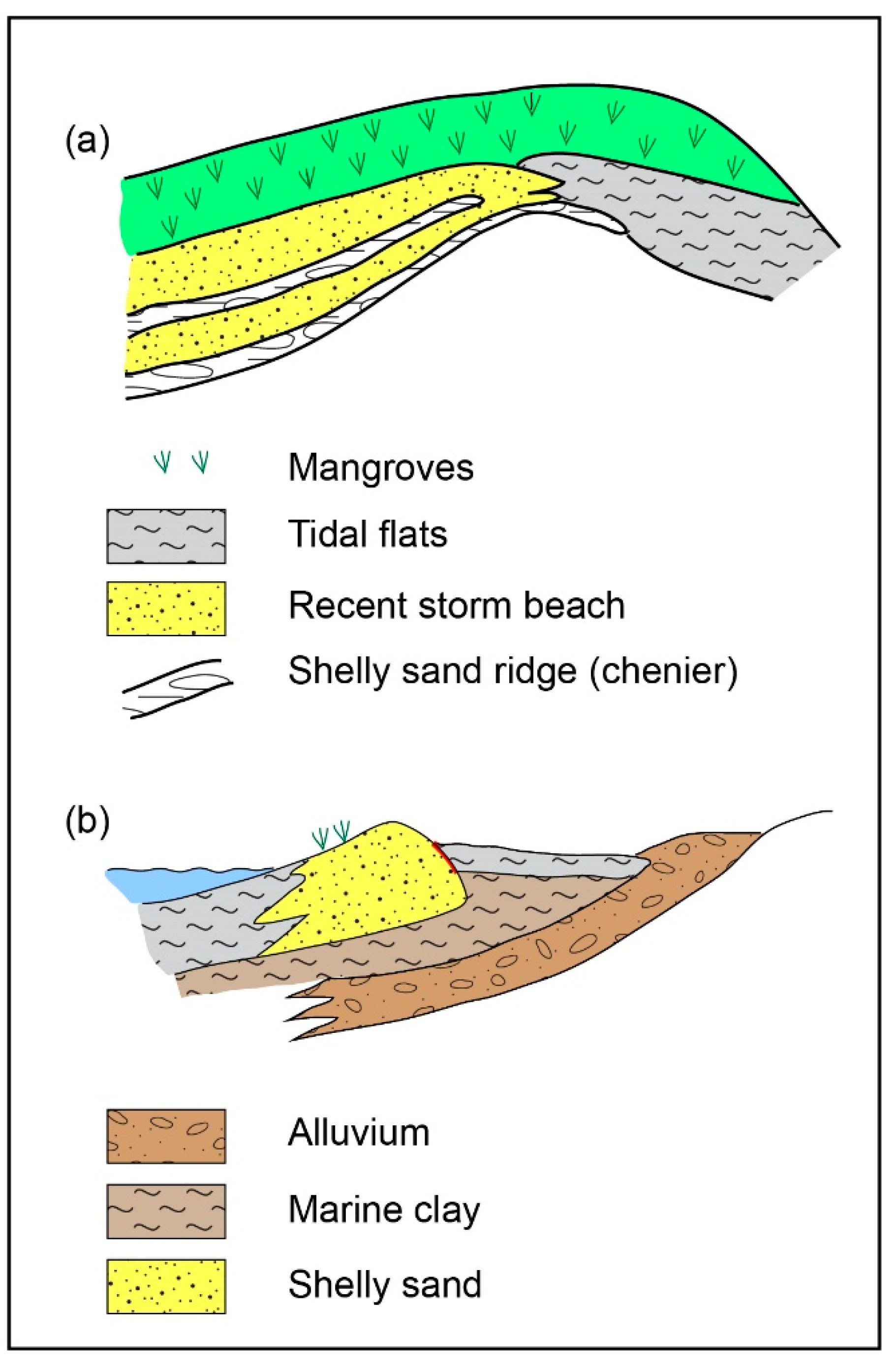

| Type of Evidence |
|---|
| Rivers |
| Channel pattern: braided, meandering, straight. |
| Channel features: banks, levees, mid-channel bars, point bars |
| Channel sediments: gravel, sand, silt, clay |
| Abandoned channels |
| Flood plains and flood plain sediments |
| Abandoned flood plains: river terraces |
| Alluvial fans |
| Pediments |
| Wetlands |
| Lakes |
| Reservoir and amplifier lakes |
| Lake shorelines and associated beach ridges |
| Lake sediments |
| Deltas |
| Ice |
| Glacial deposits: glacial moraines |
| Glacial erosion: glacial valleys, glacial cirques. |
| Periglacial deposits: angular rubble, block streams, solifluction mantles |
| Glacial loess |
| Wind |
| Desert dust |
| Dunes and sand plains |
| Clay dunes |
| Source-bordering dunes |
| Coasts |
| Coastal beach barriers and lagoons |
| Coastal plains |
| Chenier plains |
| Deltas |
| Volcanoes |
| Volcanic ash |
| Lava flows |
| Field Observations |
|---|
| Thickness of each stratigraphic unit; depth below surface |
| Nature of its contact with adjacent units |
| Munsell Chart colour (both wet and dry) |
| Soil structure, soil consistence and hardness, |
| Field texture (to within about 5% clay content, for sixteen soil textural classes) |
| Sand particle shape and degree of roundness (under ×10 and ×20 magnification) |
| Sedimentary structures |
| Clasts (size, shape, composition, %) |
| Carbonate concretions (shape, size and %) |
| Hardpan layers |
| Calcrete horizons |
| Silcrete horizons |
| Ferricrete (ironstone) horizons |
| Gypsum (crystals, powdery) |
| Micro-crystalline calcite and/or dolomite |
| Presence of snail shells (aquatic, semi-aquatic, terrestrial), |
| Charcoal fragments or other organic material. |
| Bones |
| Archaeological material (e.g., prehistoric stone artefacts, hearths, pottery, middens, burials) |
| Where appropriate, details of samples collected for OSL and/or 14C analysis. |
| Laboratory analyses |
| Particle size |
| Micro-morphology |
| Light and heavy minerals |
| Isotopic analyses (e.g., carbon, oxygen, deuterium, strontium, neodymium) |
| Chemical properties of the soils, including salinity (electrical conductivity) and alkalinity (pH; exchangeable sodium percentage) |
| Pollen analysis |
| Shell identification |
| Fossil vertebrate and invertebrate analysis (macro-fossils and micro-fossils) |
| Description | Interpretation |
|---|---|
| Horizontal beds of clay or very fine sandy clay, sometimes separated by beds of fluvial sand or silt but sometimes stacked one above the other in beds up to a metre thick, with occasional fine laminations visible within the beds. | Flood plain deposits laid down by the river during the summer flood season. |
| Horizontal beds of fine fluvial sand, showing planar and cross-bedding sedimentary structures. Bed thickness varies from a few centimetres to a metre. In a few cases bands of sand and silt a few centimetres thick alternate with more clay-rich bands of similar thickness. | Bed load channel sediments or overbank deposits laid down during exceptional floods. The alternating fine sand and clayey units are probably levee deposits that were laid down adjacent to former river channels |
| Planar- and cross-bedded gravels and coarse sandy gravels. The gravels consist of sub-rounded quartz and carbonate pebbles 1–5 cm in diameter set within a matrix of coarse sand and fine granules. | The quartz and carbonate gravels represent bed load gravels transported during phases of very high-energy flow and highly seasonal discharge. More local gravel bands reflect sporadic local flood events |
| Calcareous silts, silt loams, clay loams and marls occupying shallow pans, with abundant shells of aquatic, semi-aquatic and terrestrial snails. Colours vary from white to grey to olive brown. | Shallow ephemeral or seasonal pans filled during times of wetter seasonal climate. |
| Massive fine sandy clays with sporadic aquatic and semi-aquatic shells | Wetland deposits laid down in relatively large seasonally flooded depressions. |
| Wind-blown medium to fine well-sorted sands with planar bedding and cross-bedding sedimentary structures, and a heavy mineral suite characteristic of the alluvial sands from which they were derived. | Source-bordering dunes derived from sandy alluvium transported by highly seasonal streams. |
| Formation Name (Provisional) | Interpretation |
|---|---|
| Sihawal Formation Lower Member: poorly sorted angular quartzite gravel in silty clay matrix with sporadic fresh Lower Palaeolithic bifaces. Upper Member: massive, grey silty clay entirely devoid of artefacts and sedimentary structures. | Local alluvial fan deposits contemporary with primary context Lower Palaeolithic artefacts. Wind-blown dust or loess, possibly locally reworked by runoff and soil creep. Dry climate. |
| Khunteli Formation Upper Pleistocene fluvial sands and gravels with Middle Palaeolithic artefacts overlying a bed of relatively pure volcanic ash. Abundant calcium carbonate concretions throughout the deposit. | Alluvial sediments laid down by a seasonal bed-load river. Precipitation of calcium carbonate consistent with a dry semi-arid climate during or soon after deposition. The volcanic ash came from Toba volcano in Sumatra 74,000 years ago. |
| Patpara Formation Fining-upwards red and reddish-brown alluvial gravels, sands and clays with abundant agate, chalcedony and jasper pebbles in the lower gravel members. The Middle Palaeolithic artefacts range from highly abraded and transported to retaining sharp edges indicative of a nearby source. | Alluvium derived from source in Deccan Traps near headwaters of Son River. The sediments have been extensively weathered, with precipitation of iron under oxidising conditions during a time of wetter-than-present regional climate. |
| Baghor Formation Lower Member: cross-bedded and planar-bedded coarse sands and fine gravels, with abundant transported and carbonate-cemented vertebrate fossils. Abraded and transported Upper Palaeolithic artefacts. Upper Member: horizontally bedded alluvial clays, with primary context Mesolithic and early Neolithic artefacts. | Sparse plant cover, rapid hillslope erosion and active sedimentation in the valley. Weaker summer monsoons; colder, drier climate. Terminal Pleistocene/early Holocene flood plain deposition. Wetter regional climate. |
| Khetaunhi Formation Horizontally bedded late Holocene clays, silts and sands, now forming an alluvial terrace close to present-day river level. | A brief interval of fine-grained floodplain sedimentation during a short wetter climatic interval in the late Holocene followed by a return to a more seasonal climate and limited channel incision. |
Publisher’s Note: MDPI stays neutral with regard to jurisdictional claims in published maps and institutional affiliations. |
© 2022 by the author. Licensee MDPI, Basel, Switzerland. This article is an open access article distributed under the terms and conditions of the Creative Commons Attribution (CC BY) license (https://creativecommons.org/licenses/by/4.0/).
Share and Cite
Williams, M. When the Land Sings: Reconstructing Prehistoric Environments Using Evidence from Quaternary Geology and Geomorphology, with Examples Drawn from Fluvial Environments in the Nile and Son Valleys. Quaternary 2022, 5, 32. https://doi.org/10.3390/quat5030032
Williams M. When the Land Sings: Reconstructing Prehistoric Environments Using Evidence from Quaternary Geology and Geomorphology, with Examples Drawn from Fluvial Environments in the Nile and Son Valleys. Quaternary. 2022; 5(3):32. https://doi.org/10.3390/quat5030032
Chicago/Turabian StyleWilliams, Martin. 2022. "When the Land Sings: Reconstructing Prehistoric Environments Using Evidence from Quaternary Geology and Geomorphology, with Examples Drawn from Fluvial Environments in the Nile and Son Valleys" Quaternary 5, no. 3: 32. https://doi.org/10.3390/quat5030032
APA StyleWilliams, M. (2022). When the Land Sings: Reconstructing Prehistoric Environments Using Evidence from Quaternary Geology and Geomorphology, with Examples Drawn from Fluvial Environments in the Nile and Son Valleys. Quaternary, 5(3), 32. https://doi.org/10.3390/quat5030032






